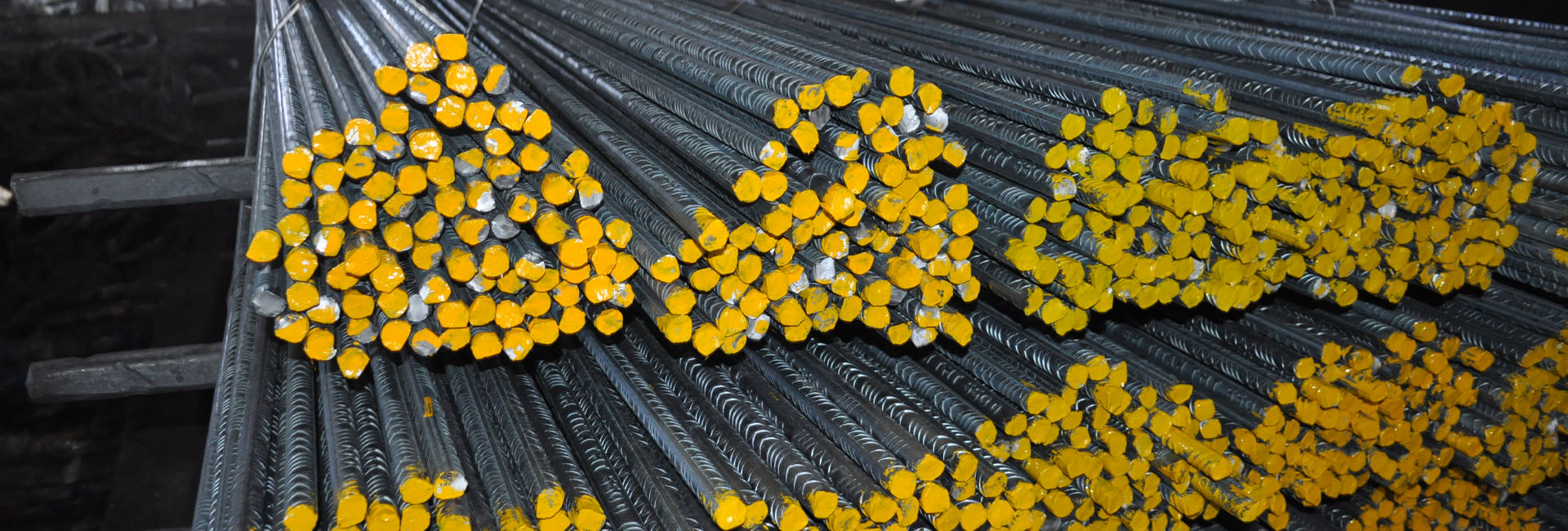TMT bars and rebars are essential elements used to construct buildings and structures all across. These are used for enhancing the strength of the concrete structures. What makes these rebars and TMT bars a favourable choice is the process where they undergo a special heat treatment process to give these steel bars superior strength, corrosion resistance and flexibility. Though both these bars are equipped with enhanced tensile strength, TMT bars are preferred in modern construction due to their earthquake resistance, flexibility, and durability. These bars are widely used in building foundations, bridges, and other heavy structures, ensuring safety and longevity.
|
Table of Content
|
What are TMT bars and Rebars?
Before heading ahead with the discussion about their role in modern construction, let’s understand these terms. In simple definition:
A rebar (short for reinforcement bar) is a steel bar used to reinforce and strengthen concrete in construction projects. Concrete is strong in compression but weak in tension, so rebars provide the tensile strength needed for structural stability.
TMT bars (Thermo-Mechanically Treated bars) are a specific type of rebar that undergo a heat treatment process, enhancing their strength, flexibility, and corrosion resistance. While all TMT bars are rebars, not all rebars are TMT bars. TMT bars are preferred due to their superior properties in modern construction.
Types of Rebars
As we have read above TMT bars are a type of rebar, we should also understand the other rebars that are used.
- Mild Steel Rebars: These rebars have smooth surfaces and low tensile strength and thus, are used in small-scale construction projects.
- Deformed Rebars: These rebars are widely used for reinforcement in high-strength structures as they have ridges for better bonding with concrete.
- TMT bars: These are widely used rebars for large construction like bridges, and buildings, etc. They are a preferred choice of material today for their properties like high-strength, ductility and corrosion resistance.
- Stainless steel rebars: High corrosion resistance and durability; used in infrastructure exposed to extreme conditions.
- Epoxy-coated rebars: Coated with epoxy to prevent corrosion; used in marine or moisture-prone environments.
Also read: Benefits Of Using Right-Grip Tmt Rebars For Bonding With Concrete
Applications of TMT bars and Rebars
Known for their strengthening concrete structures, they are widely used in modern construction. TMT bars and rebars are indispensable for creating safe, long-lasting structures in various construction sectors. Key applications include:
-
Residential Buildings:
TMT bars and rebars are extensively used in the construction of homes, apartments, and high-rise buildings. They provide the necessary tensile strength to concrete, making structures resilient to stress and loads, and ensuring durability and stability over time.
-
Bridges:
Bridges require reinforcement that can withstand heavy loads and environmental factors like wind, rain, and vibration. TMT bars are commonly used in bridge construction due to their high ductility, flexibility, and earthquake resistance.
-
Dams and Reservoirs:
In large water-retaining structures like dams and reservoirs, TMT bars offer strength and resistance to corrosion, crucial for maintaining the integrity of these projects against water pressure and harsh environments.
-
Industrial and Commercial Structures:
TMT bars and rebars are essential for building factories, warehouses, and shopping complexes, providing structural reinforcement that allows these buildings to handle heavy loads and large spans.
-
Infrastructure Projects:
Major public infrastructure like highways, tunnels, airports, and railway tracks rely on the superior strength and durability of TMT bars to enhance longevity, minimize maintenance, and ensure safety under extreme conditions.
Also read: Difference Between Fe500 & Fe500d TMT Bars
Why are these preferred materials for construction?
We have spoken a lot about the tensile strength, ductility and corrosion resistance of these materials. Let’s explore these things in detail, along with other features that make them sought-after materials for construction.
-
Tensile Strength:
TMT bars have excellent tensile strength, which allows them to bear tension forces. When embedded in concrete, they form a composite material that can withstand both compressive and tensile stresses. This combination makes the structure more resilient to forces such as bending, twisting, or stretching.
-
Ductility:
TMT bars are highly ductile, meaning they can elongate under stress without breaking. This property is crucial in earthquake-prone areas, as it allows structures to absorb and dissipate seismic energy, preventing sudden collapse.
-
Corrosion Resistance:
TMT bars are treated to resist corrosion, an essential feature for structures exposed to moisture, chemicals, or harsh weather. This ensures that the reinforcement maintains its strength and does not deteriorate over time, preserving the overall integrity of the structure.
-
Flexibility:
TMT bars offer flexibility, enabling structures to handle dynamic loads such as heavy traffic or high winds without cracking or breaking.
It can be TMT bars vs rebars, but choosing the right rebars and TMT bars is all that we need to do. Rest all is taken care of by them. These are long-lasting solutions for a safe dwelling. Sree Metaliks is a trusted name in the construction industry. We are known for our various products, especially TMT bars. Our production practices are sustainable and eco-friendly and we are known for our commitment to superior quality. Check our website for more details.
Also Read: Why TMT Bars Are the Future of Building Construction?
For more information, please reach out to us at: Sales@sreemetaliks.com

